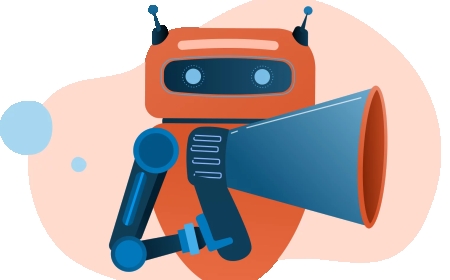Crafting Intelligence: A Deep Dive into LLM Development
This article explores the full life cycle of Large Language Model (LLM) development—from data collection and transformer architecture to training, fine-tuning, evaluation, and deployment. It provides a clear, structured overview of how LLMs are engineered.
Introduction

Large Language Models (LLMs) are at the heart of the AI revolution. From powering virtual assistants and search engines to enabling code generation and scientific research, these models have become the engines of human-AI interaction. But behind their fluent dialogue and intelligent reasoning lies an immense engineering effort that spans data science, deep learning, and distributed computing.
This article explores the full life cycle of LLM developmentfrom gathering raw data to training, fine-tuning, alignment, and deployment. Whether youre an AI enthusiast, developer, or decision-maker, understanding how LLMs are built helps demystify the black box and reveals the true scale of innovation behind them.
1. The Foundation: Data Acquisition and Curation
LLM development starts with data. Models like GPT-4, Claude, and Mistral are trained on vast corpora comprising trillions of words across books, websites, forums, technical papers, and more.
Key goals in data collection:
-
Diversity: Texts from multiple domains, cultures, and languages
-
Quality: High signal-to-noise ratio; clean, factual, and grammatically correct
-
Ethics and legality: Respect for copyright and user privacy
Once collected, the data undergoes rigorous preprocessing:
-
Deduplication to avoid overfitting
-
Filtering to remove toxic or biased content
-
Tokenization to convert raw text into units (tokens) the model can learn from
Data is the models experience, and the breadth and integrity of this experience directly affect its intelligence.
2. The Brain: Transformer Architecture
Most LLMs today use a transformer architecture, introduced in the seminal 2017 paper Attention Is All You Need.
Key components:
-
Self-attention mechanisms that let the model weigh the importance of each word in a sentence
-
Feedforward layers that transform token representations into deeper abstractions
-
Positional encodings that help the model understand word order
The architecture is scaled to billions of parameterseach a numerical value adjusted during training to capture linguistic relationships. More parameters often mean more capacity to learn, but also require significantly more computational resources.
Variants like decoder-only transformers (used in GPT models) and encoder-decoder architectures (used in translation models) serve different goals but build on the same foundational principles.
3. Training at Scale: Compute, Algorithms, and Strategy
Training an LLM is a massive undertakingrequiring parallel computing, optimized algorithms, and weeks (or months) of compute time.
Training involves:
-
Next-token prediction: The model learns to predict the next word in a sentence, over billions of examples
-
Gradient descent optimization: Adjusting model parameters to minimize prediction error
-
Distributed training: Spreading the workload across thousands of GPUs using data, model, and pipeline parallelism
-
Mixed precision training: Using lower-bit precision (e.g., FP16 or BF16) to reduce memory usage and speed up computation
Frameworks like DeepSpeed, Megatron, and JAX enable efficient training, while cloud platforms like Azure, AWS, and GCP provide the scale.
4. Post-Training: Fine-Tuning and Instruction Alignment
A pretrained LLM is powerfulbut raw. It needs refinement to follow instructions, generate helpful responses, and avoid harmful behavior.
Fine-tuning methods:
-
Supervised fine-tuning (SFT): Teaching the model to follow prompts using labeled instruction-output pairs
-
Reinforcement Learning with Human Feedback (RLHF): Allowing human feedback to guide model behavior toward more useful, safe, and aligned responses
-
Instruction tuning: Training on varied tasks (summarization, translation, reasoning) to increase versatility
This stage transforms a generic language model into an intelligent assistant, coder, or domain-specific tool.
5. Evaluation: Measuring Intelligence and Safety
Before deployment, the model must be tested extensively.
Metrics include:
-
Perplexity: A measure of how well the model predicts unseen data
-
Task performance benchmarks: Including MMLU (general knowledge), HellaSwag (commonsense reasoning), and GSM8K (math)
-
Bias and toxicity audits: Detecting whether the model produces unsafe or discriminatory outputs
-
Red-teaming: Stress-testing with adversarial prompts to identify vulnerabilities
Evaluation is both quantitative (metrics) and qualitative (human reviews). No LLM is perfect, but continuous testing ensures steady progress.
6. Deployment and Integration
Once validated, LLMs are deployed via APIs or embedded into applications. Deployment involves a new set of engineering considerations:
Key challenges:
-
Latency and throughput: Serving responses in real-time while handling millions of queries
-
Cost optimization: Using quantization, distillation, and caching to reduce inference costs
-
Context management: Handling long conversations or documents using retrieval-augmented generation (RAG)
-
Personalization: Adapting responses to user preferences, tone, or prior interactions
Open-source models (like LLaMA, Mistral, and Falcon) are increasingly popular for on-premise or private deployment.
7. Responsible AI: Ethics, Governance, and Guardrails
With power comes responsibility. LLM developers must ensure their models are used ethically and remain aligned with human values.
Responsible development practices:
-
Bias mitigation: Removing or reducing learned social, racial, or gender biases
-
Content filtering: Implementing safety layers to catch inappropriate outputs
-
Transparency: Documenting training data sources, model limitations, and safety protocols
-
User feedback loops: Continuously improving models based on real-world usage and reports
Organizations are also exploring constitutional AI and debate-style training to build more robust alignment mechanisms.
8. The Future of LLMs
LLM development is rapidly evolving. The frontier is shifting from language-only models to multimodal systems that can handle images, audio, and video; from reactive assistants to autonomous agents capable of planning and decision-making.
Emerging trends include:
-
Smaller, smarter models: Efficient enough for mobile and edge devices
-
Open LLM ecosystems: Collaborative development of models and tooling
-
Context-aware memory systems: Persistent models that learn over time
-
Tool-augmented agents: LLMs that call APIs, run code, or browse the web
The field is moving from building models that generate language to systems that understand and act with language.
Conclusion
Developing large language models is one of the most challenging and impactful endeavors in modern AI. It requires not only massive data and computation but also thoughtful design, safety alignment, and a commitment to responsible deployment.
As LLMs continue to advance, the way we work, learn, create, and communicate will be increasingly shaped by these engineered intelligences. Understanding how theyre built helps us ensure theyre developed wiselyand used well.










































